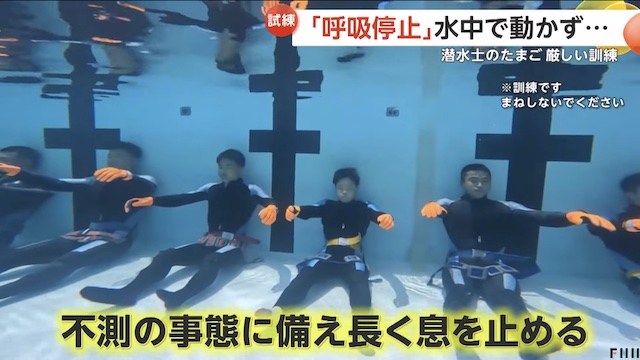TOKYO, Jul 06 (News On Japan) - Over ten individuals sit still in a pool, extending their arms and legs forward, holding their breath. Dressed in wetsuits, they all keep their eyes open.

This scene is from the diving training course at the Japan Coast Guard Academy, where trainees selected from across the country undergo rigorous training to become rescue divers.
Rescue divers are responsible for lifesaving during maritime accidents. To become a rescue diver, one must endure two months of intense training.
Breath-holding drills, essential training conducted at the start of each day, prepare divers for unexpected situations where they might be unable to use their oxygen tanks.
During this training, participants hold their breath for as long as two and a half minutes.
The reason for keeping their eyes open during the drill is to ensure they haven't fainted.
These trainees undergo severe training daily to protect lives, striving to overcome the rigorous challenges and become esteemed rescue divers.
Source: FNN















